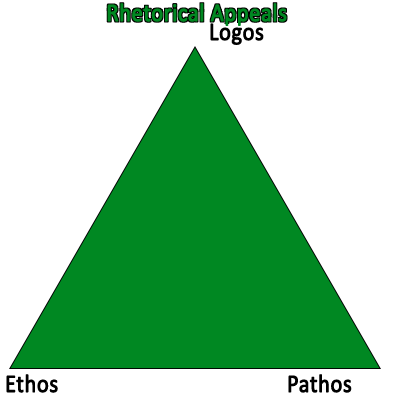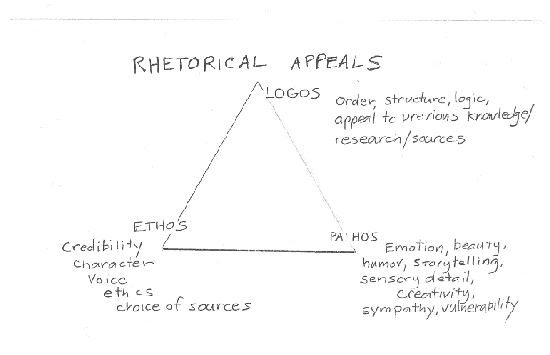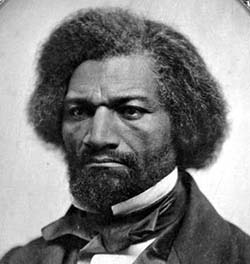Third International Symposium on
Academic Writing and Critical Thinking
Reading Rhetorically to Support Writing Instruction
John Peterson
Stanford University
Remarks delivered to the
Third International Symposium on Academic Writing and Critical Thinking
This symposium asks us to think of academic writing and critical thinking together. This combination of objectives is insightful and inspiring. This is challenging work. It is difficult work. It is important work, and we need symposia to share ideas.
In the Program in Writing and Rhetoric at Stanford there are over fifty of us. We teach classes mostly to first and second year students at Stanford. We call ourselves the Program in Writing and Rhetoric – we are a writing program – because we use a rhetorical framework for teaching writing, reading, research, and presenting research to live audiences. One reason we use that approach is research has found that a rhetorical framework motivates students to read more closely and write more urgently.
But what is rhetoric? That is not an easy question.
I am afraid that rhetoric is often misunderstood. Many think rhetoric is what a salesman uses to convince people to buy something. I understand that reputation. We can go all the way back to ancient times to find the roots of that reputation and why rhetoric even to this day is something that many do not trust.
Let me tell you a story about the earliest days of rhetoric, the story of Corax and Tisias. This story takes place in Syracuse about 5th century BC. Syracuse is not in Greece. It is part of what we now know as Sicily. But by sea, it is not that far from Athens, and scholars would exchange ideas between Athens and Syracuse.
Many might consider Corax the grandfather of rhetoric, and so this is a tale of the birth of rhetoric. It is an apocryphal tale, which means that it may or may not be true, but we accept it as a version of the truth because it teaches us about what happened – even though it may not be what happened. Corax was a teacher. He taught people how to go before the court and argue their case. To some, it seemed as if Corax was teaching people how to use tricks of semantics and logic – the elements of rhetoric – in order to persuade the court. Early on, then, we see this idea that rhetoric was a method for tricking people.
One of Corax’s students, Tisias, didn’t have money to pay for his rhetoric lessons. So they made a deal. Corax was so sure of his method that he told Tisias he would not have to pay his fee until he won his first case.
Tisias studied with Corax, and he learned the methods of rhetoric. But then Tisias told Corax that he would not go before the court to try a case. And therefore, he reasoned, he would not have to pay Corax his fee. Corax therefore sued Tisias. He took him to court in order to get his fee. And what happened? Tisias, the student, lost the case. Now Tisias argued to the judge, that since he had lost his first case, he did not have to pay Corax. Their contract was that he must pay only after winning his first case. But Corax told the judge that since he sued and won, Tisias must pay.
The judge told them they were making a mockery of logic, and he threw them both out of court. And here we see the early suspicions of rhetoric.
Making a mockery of logic. That is the sin of the salesman who uses rhetoric to trick the customer. Hidden costs, agreements that can be manipulated; these are the tools of the dishonest con artist.
Ethically, we, the audience, can see how Tisias is making a mockery of logic. But, as Wayne C. Booth has pointed out, rhetoric is not designed for manipulation. It is not trickery. Those who are using it to trick people are using what Booth calls rhetrickery. But the suspicion of dishonest rhetoric persists so strongly that the term “rhetoric” itself is often used to signal deceptive use of language.
Academics do not teach rhetrickery. In an academic context, we might be amused by these tricks, but like the judge, we reject them. Trickery has no place in academic discourse. We are academics; we teach our students within an academic context. And a key concept in the study of rhetoric is the ethos, which includes ethics.
We teach from an ethical framework in which we help students evaluate evidence and present valid evidence. It is our custom to communicate with highly ethical character, as we pride ourselves in sharing our work for open and rigorous scrutiny by our most respected peers. One of the functions of learning rhetoric is it helps students see, through their analysis, when a source of information is being manipulative, often with hidden bias. It gives students power over their reading and research, and it helps them care about ethos.
Rhetorical reading helps writers care.
I will offer a very brief overview of rhetoric, particularly reading rhetorically. I hope to add to your teaching. First, I will go into some basics of writing and reading instruction in a rhetorical framework. Then I will demonstrate reading rhetorically to dig deeper into some basic rhetorical components to motivate students through increased self-awareness of the rhetorical situation, so they get to play with the riddles of rhetoric. I’ll end by giving you a framework that helps students situate researched texts in a self-aware relationship of reading and writing. Here is the Rhetorical Situation. Aristotle described this situation for us. If your students are speaking or writing, what they do and how they do it depends on who they are talking to and what they want to achieve. When they try to speak or write in English, what they do depends entirely on the situation. |
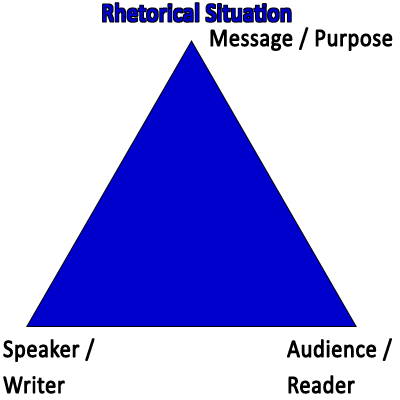 |
At the core of rhetoric is this concept that communication is situated. The same is true of all reading. We have a text. What is the purpose of the text? Who is the writer? To whom are they writing? These components are all in relation to each other. We can use an equilateral triangle because all angles are almost equal, all sides are almost equal. Most important: the point at each intersection is connected to the other points. These are all working together, and they are all affecting each other. Maybe it is not always equal at every moment of the reading – sometimes addressing who you are writing to is more powerful than your message, for instance. Then the triangle is not rigidly equilateral.
Here is another view of the rhetorical situation. Here, I include “context,” which really affects all components. Context is very important in determining purpose. What is the occasion for writing? What is happening in the moment that calls for this rhetorical act? How is the audience prepared to receive this communication? |
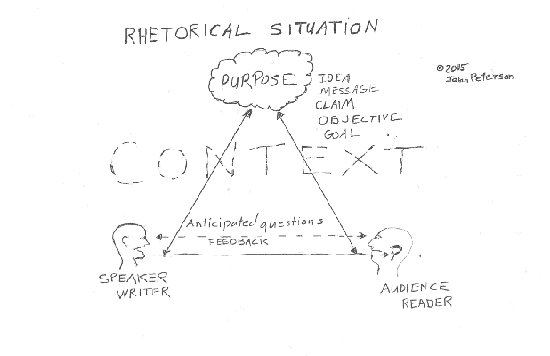 |
Let me observe my own rhetoric. Here I have hand-drawn this image, so it breaks it down more. I use visual rhetoric to engage you in our rhetorical situation. Now you see me, you see the writer has a place in here. When you see me, that helps my purpose or message. Because I want you – my audience – to laugh at this and know that we are all working together on this.
Let’s break it down further. When a writer tries to communicate to the audience, the writer wants to appeal to the audience. To trigger something in the audience.
Again, we see the triangular relationship between the three components. This is not to show equality – because in academic writing so often logic, part of logos, tends to be a high priority – but to show the interconnected relationship between the appeals. Now, some students think simply logos is logic, pathos is emotion, and ethos is ethics or credibility. That is close, but it oversimplifies. These appeals are concepts that come from Aristotle as well. So when we teach students rhetoric now, we are continuing a tradition that dates back to the ancient Greeks. We are getting these concepts from Greek texts written in ancient Greek. In English, we don’t have single word definitions for these concepts. |
|
In the US, some teachers working within a rhetorical framework use the Greek terms. I do as a starting point. I want students to know that they are working in an ancient tradition. They are in dialogue with the very beginning of academic knowledge and critical thinking. And at Stanford, teachers have the option. Caution: If you use the Greek terms, sometimes students think the objective is simply to learn these words efficiently and not learn the rich concepts behind them. If we simply translate to logic, emotion, and ethics those words flatten the concepts. So it is important not to insist that students only use the terms. That use may substitute for a fuller understanding.
Logos is structure, order; even formatting is part of logos. Also, it is calling upon knowledge a reader already knows and referring to research. What is the intellectual framework, the previous knowledge, that informs the argument? These are all moves of logos. In academic discourse, logos has high value. But one must read the rhetorical situation in order to assess when and how logos will be used. |
|
Ethos is about character, credibility and style. The ethics or value are expressed in both character and content.
Pathos appeals to emotion, yes, but that is part of beauty and the aesthetic, humor, or storytelling. Vulnerability is in some situations appropriate.
We have some very helpful researchers who have written about reading rhetorically. Here are some that helped me write this for you.
John Bean and others talk about how we can get students to be active readers so they can use rhetorical devices in their own reading.
Alice Horning and others stress the psychology of reading and how connected it is to writing. The depth in how we read is connected to the depth in how we write.
Stanford’s program in Writing and Rhetoric uses the rhetoric of Aristotle and the ways that has been challenged and reworked by people such as Kenneth Burke, Stephen Toulmin, Andrea Lunsford – who founded the Stanford program – and many others to create frameworks for becoming self-aware of ways communication is delivered.
Reading texts
Okay, now we have looked at the rhetorical situation and the rhetorical appeals, we can see how students might use this framework for reading individual texts. As I say, it helps them see tricks. But it also makes them self-aware about their own rhetorical choices as writers. And again, as a matter of ethos, they would not pursue tricks because academics reject manipulation. To make reading rhetorically more complex, we can apply it to reading for research. That means in research, students can look at individual rhetorical situations and compare them to other rhetorical situations.
This research is difficult for many students. It makes them tired. For students who have been reading English all their lives, it is tiring. When English is second language, it can be exhausting.
Reading rhetorically is a new game for students. And so it can help motivate them. They have a chance to become more involved in the reading. When they use the rhetorical framework, they are motivated to figure out not just the information of the reading. When they ask what is the purpose of the writer, what is the writer trying to achieve by giving this information in this format at this time to this audience, it changes the research. The student is not approaching reading just to get information but to activate the reading for their own writing purposes.
Allow me to demonstrate some rhetorical reading.
|
Taken by itself, this is a beautiful bit of language. So let me read
rhetorically. Who is the audience? What is its purpose? Who is the speaker or
writer?
I know I’m in its audience. So I can extend those characteristics to speculate on who this is speaking to. It is about reading, so it gets my attention. I value education. I empathize with the limitations of members of the community who are illiterate.
The quote appeals to a wonderful concept of freedom. As an optimist and idealist, I am triggered to feel good about this sentence. What’s more, it puts that word “forever” in there. It gives that sense of time. This is logos, or structure, or order, or logic. In this case, reading is so powerful that it lasts forever. And, while forever might be irrational, there is a logical sense to the claim. It makes sense that once someone can read, they have significantly changed their relationship to the world, their access to many worlds. And, reading in a second language also makes you free. In the sense of imagination and knowledge, you are free until you die. If you taught someone else to read, that freedom will continue to last beyond one person’s death, maybe forever.
So I just did a mini-rhetorical analysis of this passage. Now let’s add more rhetorical considerations that will start to give context. Think about the author, the writer or the speaker. We can assume the writer is also an idealist.
This is a famous quotation from the formerly enslaved American Frederick Douglass, as some of you know. Unlike most slaves, he learned to read and write. And he transformed his life by writing the narrative of his autobiography, published in 1845. He became an internationally known writer because he told his own story and therefore told the world about what it feels like to be a slave. That situation, that identity of the writer, shapes how we understand this quotation. The persona, the character of the writer, his ethos gives him incredible power for us, his audience. |
|
But what happens when we take this rhetorical situation and connect it with another rhetorical situation? Then we get engaging research. We need to see connections between texts. We get complex rhetorical reading.
I recently saw this quote in a New York Times magazine interview with Carla Hayden, who is the newly appointed Librarian of Congress. Hayden is African-American, from Baltimore. And as librarian there, she was an activist librarian who expressed her political views and kept the library open even during civil unrest following the death of Freddie Gray in police custody. She was a civil rights hero before that. She resisted the F.B.I.’s attempts to access personal information through library user records. This conflict is similar to the controversy over Japan’s State Secrecy Law.
Frederick Douglass said, “Once you learn to read, you will be forever free.” If you can absorb information yourself and make your own decisions, that’s a freedom. And for so many times in history, being able to read and access information has been part of it, especially in my case, with African-Americans. |
So this quote has power, but the rhetorical situation of my having read
this quote – not in the original but in an interview with an activist librarian
– expresses a particular kind of power. She uses Douglass’s words: “Once you learn
to read, you will be forever free.” And
then she adds her own. “If you can absorb information yourself and make your
own decisions, that’s a freedom.” So now I know more about Douglass’s quote
than I did before. And I can’t read it the same way as I did when I read it on
my own. Her comment made me look at it rhetorically, situated within a
different context. And I also had to “read” the significance of Hayden’s
context, her life, in order to understand why she referred to that quote, what
meaning she brings to it.
As Marvin Diogenes, one of the heads of Program in Writing and Rhetoric at Stanford, likes to say. “You never read the same text twice.” Every time you go to read something again, you experience it differently. You know more. Because you are situating the text within a new context.
Research deepens the power of reading. Particularly now, when facts or long-held assumptions might be ignored by politicians or other public figures. We want powerful reading. My hypothesis – along with many others who share this approach – is that as one becomes a stronger reader, one becomes a stronger writer. So we must instruct in both. Certainly now in the United States we are all concerned about how information is being restricted or manipulated. All communication must be read carefully to understand its context, understand its purpose, understand who is speaking or writing and why.
“Meta” writing
Before I close, I will very briefly introduce an activity designed to get students practicing meta-writing. This involves not just reporting information about their research but trying to do writing that explains to their readers how they are thinking. It is a rhetorical strategy for calling attention to certain ideas and getting the reader to slow down.
Going to a “meta” level in a discussion means that you speak with your audience about how you are thinking about your explanation to them. It comes from the concept of “metacognition,” which means thinking about thinking. In this way, speakers or writers discuss their own thought processes so that their audiences are persuaded by the ways they think.
“Meta” statements help you talk to your audience about what you are attempting to communicate.
For example, a student might write, “One thing that is really fascinating to me about the Japanese State Secrecy Law is that I get the sense that, in general, many people just assume the law will restrict their freedom.”
Then they might make it clear they agree with the assumption, but they wish to use critical thinking: “I would love to raise a few questions about this assumption of restricted freedom. For example, how do the needs for our safety push against the needs for privacy and freedom of expression?”
In a sense, then, through meta-discussion a student writer gives a map to their readers. In writing, the student writer exposes the thought process they are using to reason through difficult ideas. Sometimes, depending on the rhetorical situation – Audience, Purpose, Writer – the writer can strategically show the audience that they are weighing one perspective against the other and trying to reason it out.
The rhetorical framework
In closing, I hope you will find some use in the rhetorical framework. Reading rhetorically gives students control. It reinforces that writing is not just about following directions and going through the motions in order to receive a grade. When students read rhetorically, they engage with research and with their own writing and revision. They can develop a meaningful dialogue with their readers and lead them toward understanding. This self-aware use of texts can be seen as a major step in a writing process. It connects them with their reading and their readers.
And through rhetoric they can express themselves using the theme of this symposium: They can communicate with “clarity and impact.”
Contact NU Ideas:
nuideas@ilas.nagoya-u.ac.jp

